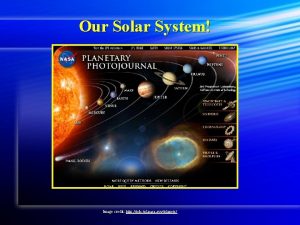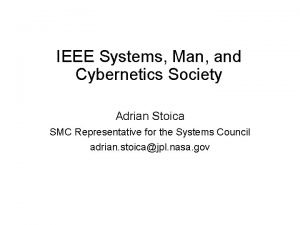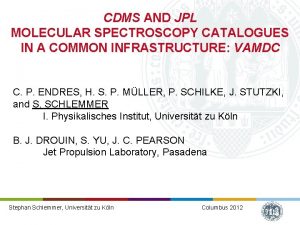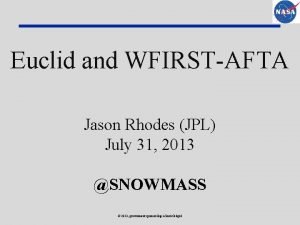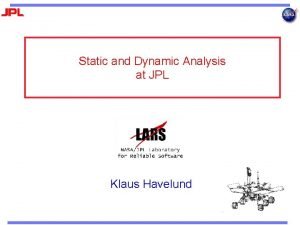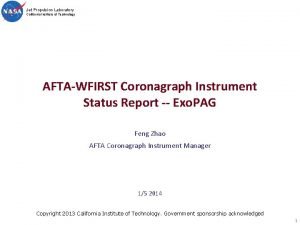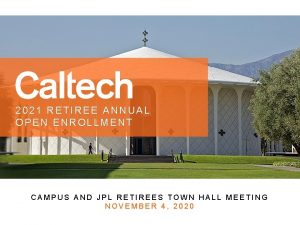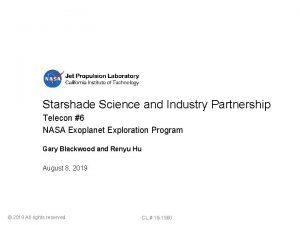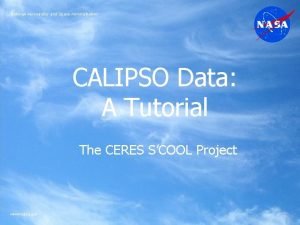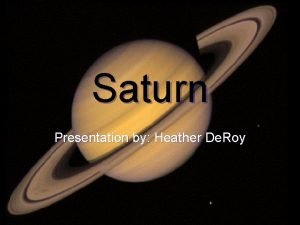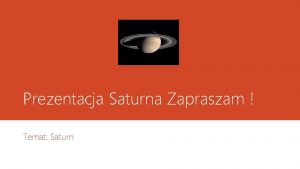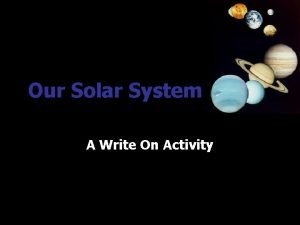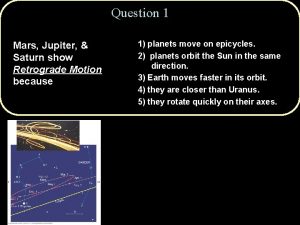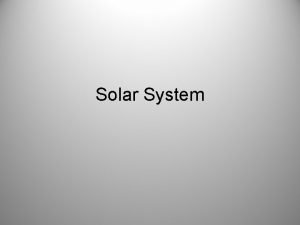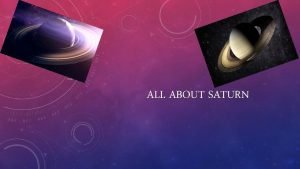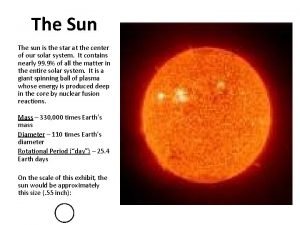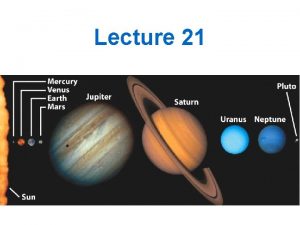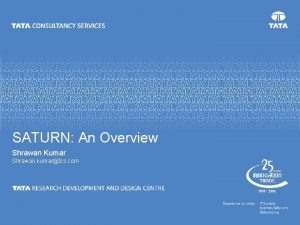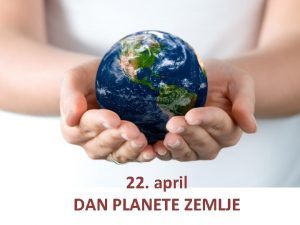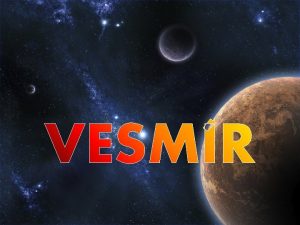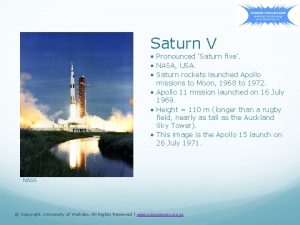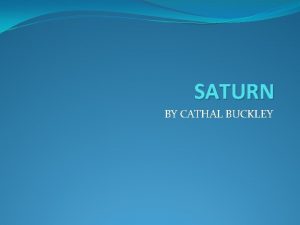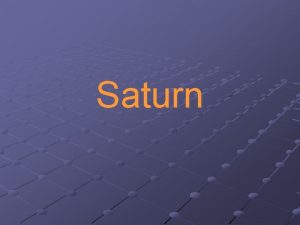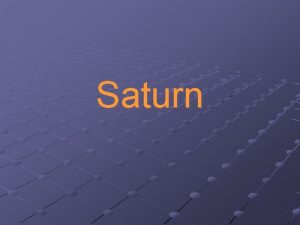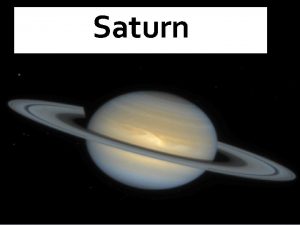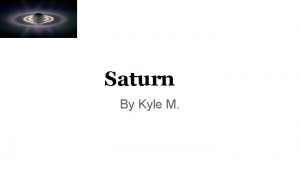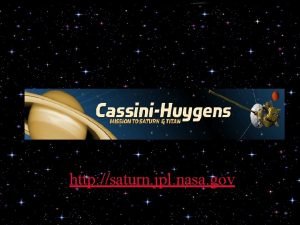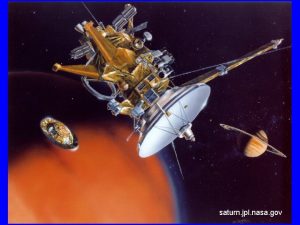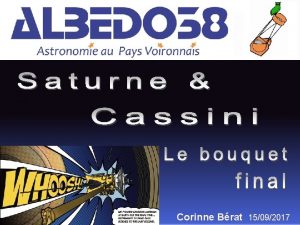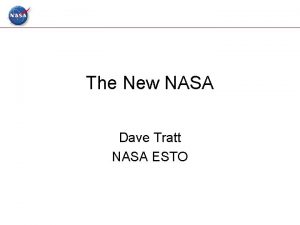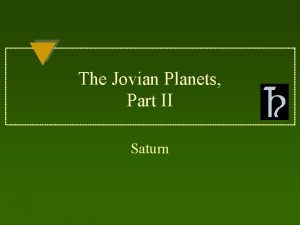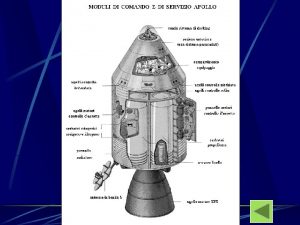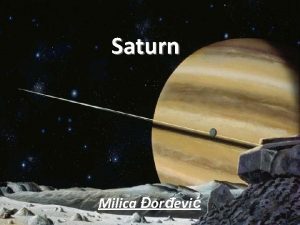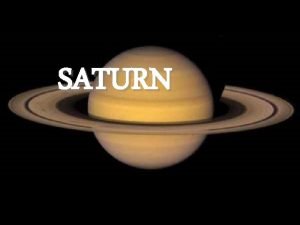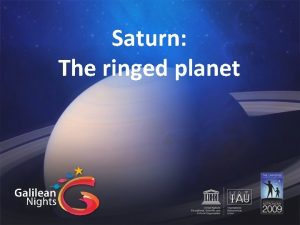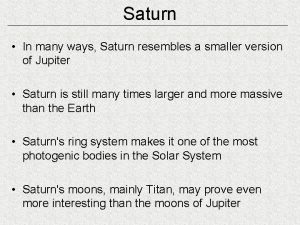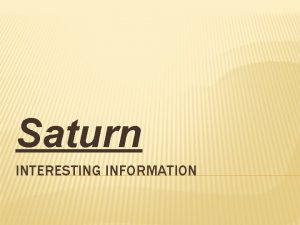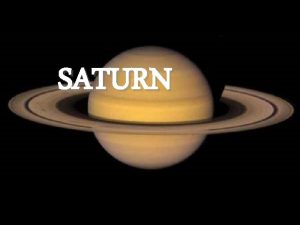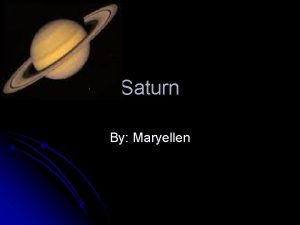ps saturn jpl nasa govsciencemoons Saturn was named






















- Slides: 22

ps: //saturn. jpl. nasa. gov/science/moons/

• Saturn was named after the Roman god of agriculture. • Saturn introduced agriculture to his people by teaching them how to farm the land. • Saturn was also the Roman god of time; Saturn is the slowest of all planets • Saturn was the father of Jupiter • Where we get the name Saturday

Saturn’s Atmosphere • The composition of Saturn is similar to that of Jupiter. Gas and hot liquid hydrogen. • Even though it is almost as big as Jupiter it is less dense; the liquid gas is packed together quite loosely. • Saturn has been loosing helium from its atmosphere and gaining it in its center; making it like a large helium balloon • If you could find a ocean big enough, Saturn would float in it • Saturn also rotates rapidly, once every 11 hours or so. • Saturn takes 29. 7 years to revolve around the sum • Saturn’s weather is like that on Jupiter, although the contrast between different bands is much less.

• Saturn also rotates rapidly, once every 11 hours or so. • Saturn takes 29. 7 years to revolve around the sun

Saturn The most obvious feature of Saturn is its large ring system When Galileo saw Saturn in 1610, he was confused about the shape. Thought it had “ears”, “bumps” or handles like a tea cup Mystery solved, 1655, Dutch astronomer Christian Huygens (telescope), what Galileo saw were numerous rings with spaces between them • Each ring is made up of billions of tiny rocks; some as small as a grain of sand others as large as a house; all orbiting around Saturn • •

Saturn • The rings are very thin, and gaps are evident, even from the ground. They consist of fragments of ice and icecovered rocks.

Saturn Rings • Saturn’s rings are extremely thin • Though they stretch 124, 000 miles they are only 100 feet thick • Food for thought: Trying to see them from the edge is like trying to spot the edge of a CD from 20 miles away.

Saturn • Small satellites can cause some of the rings to ripple or to have braided structure.

Saturn • Small satellites can cause some of the rings to ripple or to have braided structure.

Saturn’s Rings • From Voyager, we know the rings are composed of hundreds or thousands of “ringlets”.

Saturn • The large dark gap in Saturn's rings is called Cassini's division.

Other Saturn Facts • The rings tilt from 29 to zero degrees; because they tilt they are not always seen from Earth as rings (thus Galileo’s bumps) • The patterns of the rings are caused by the gravitational tug of moons. • “Shepherding Moons”-Promethus and Pandora orbit Saturn on either side of one of its narrow rings

• Saturn host at least 62 moons. • Only 7 are spherical.

Saturn’s Moons • Saturn has 1 very large moon (Titan), 10 moderate size moons, and a few dozen much smaller ones.

Saturn’s Moons • Saturn has 1 very large moon (Titan), 10 moderate size moons, and a few dozen much smaller ones. • Titan is the only moon with an atmosphere.

Titan • Titan’s atmosphere is mostly hydrogen with a substantial amount of methane. • There are organic molecules, but it is probably too cold for life to have evolved.

Titan • There are lakes of liquid methane, as well as large flat areas.

Mimas…Herschel crater • 123 miles wide

Rhea is an icy body that is heavily cratered It has a small rocky core with the rest made of ice

Iapetus Looks like a peach

Saturn • Voyager 1 (1980) and Voyager 2 (6 months later 1981) flybys gave us data a pictures of Saturn and its moons

ATMOSPHERE: • Hyrogen • Helium Scientists think that Saturn’s rings are formed by natural satellites breaking up. RINGS: • Ice, water, and dust from satellites which broke up near Saturn • Thickness: 10 -100 meters • Different brightness • Gaps in between some rings, others are braided Saturn could FLOAT due to its extremely low density Seasons last more than 7 Earth years!!!
 Http://pds.jpl.nasa.gov/planets/
Http://pds.jpl.nasa.gov/planets/ Adrian stoica jpl
Adrian stoica jpl Jpl molecular spectroscopy
Jpl molecular spectroscopy Jason rhodes md
Jason rhodes md Jpl c coding standard
Jpl c coding standard Jpl org chart
Jpl org chart Jpl retirement benefits
Jpl retirement benefits Jpl siri
Jpl siri Gary blackwood jpl
Gary blackwood jpl Awit kahulugan sa panitikan
Awit kahulugan sa panitikan Calipso browse images
Calipso browse images Saturn presentation
Saturn presentation Saturn prezentacja
Saturn prezentacja Write about solar system
Write about solar system Mars, jupiter, and saturn show retrograde motion because
Mars, jupiter, and saturn show retrograde motion because Saturn is a
Saturn is a Fun facts about saturn
Fun facts about saturn Uranus distance from sun
Uranus distance from sun Saturn outline
Saturn outline Saturn
Saturn Neptun saturn
Neptun saturn Saturn prezentace
Saturn prezentace The two outer jovian planets appear bluish
The two outer jovian planets appear bluish
